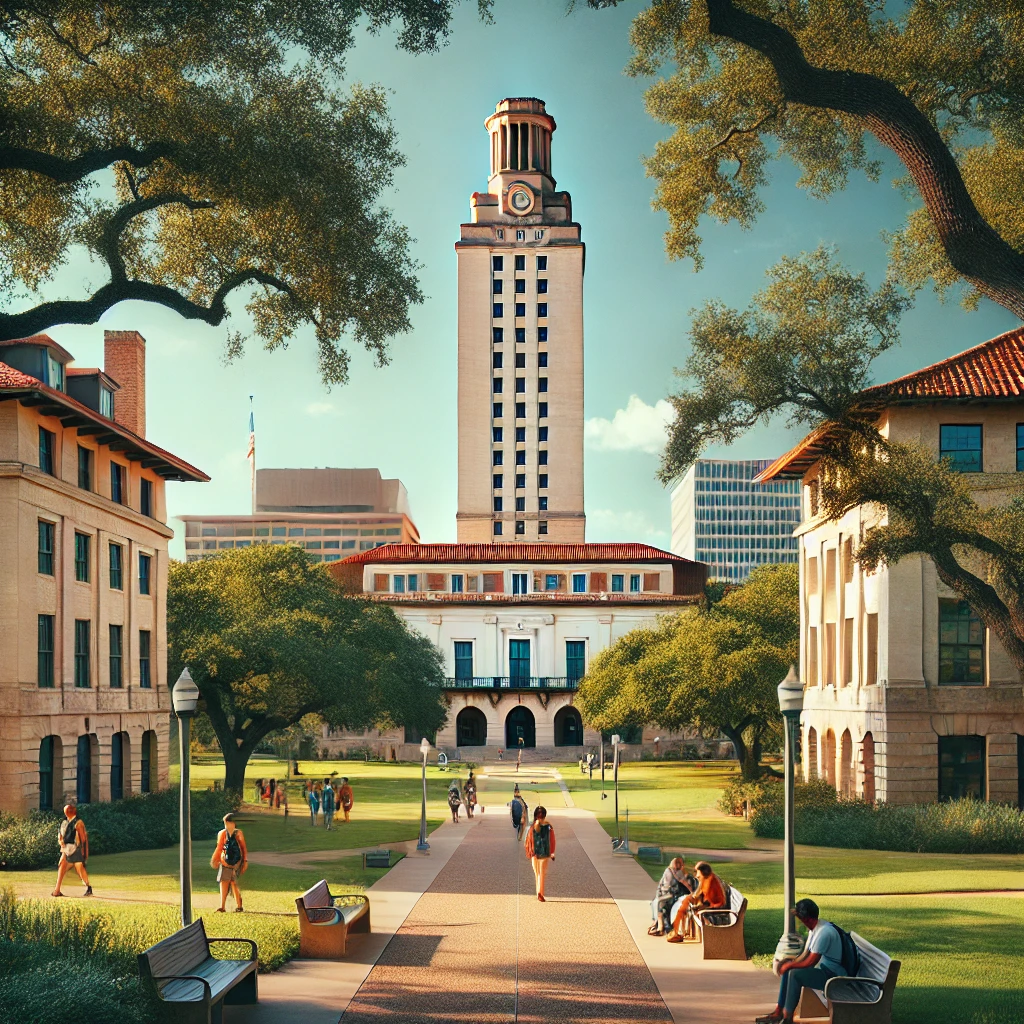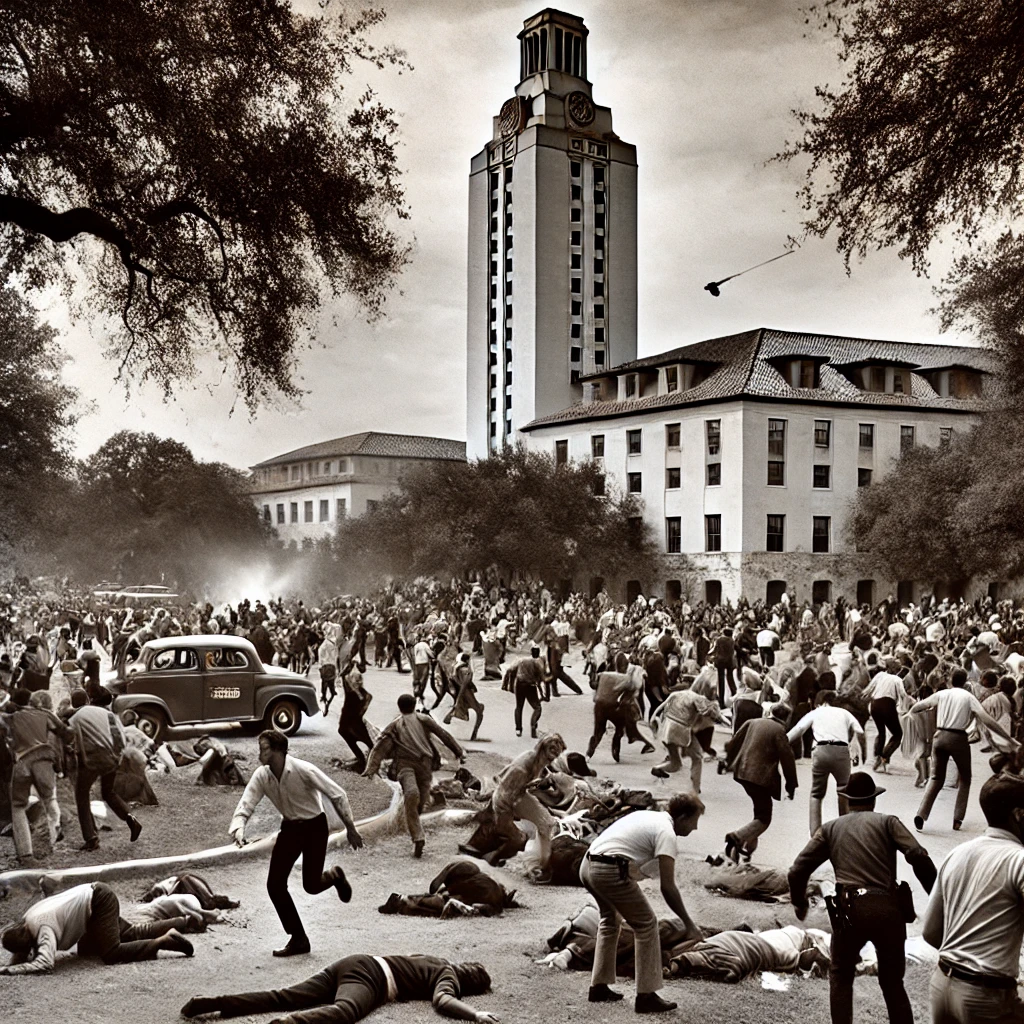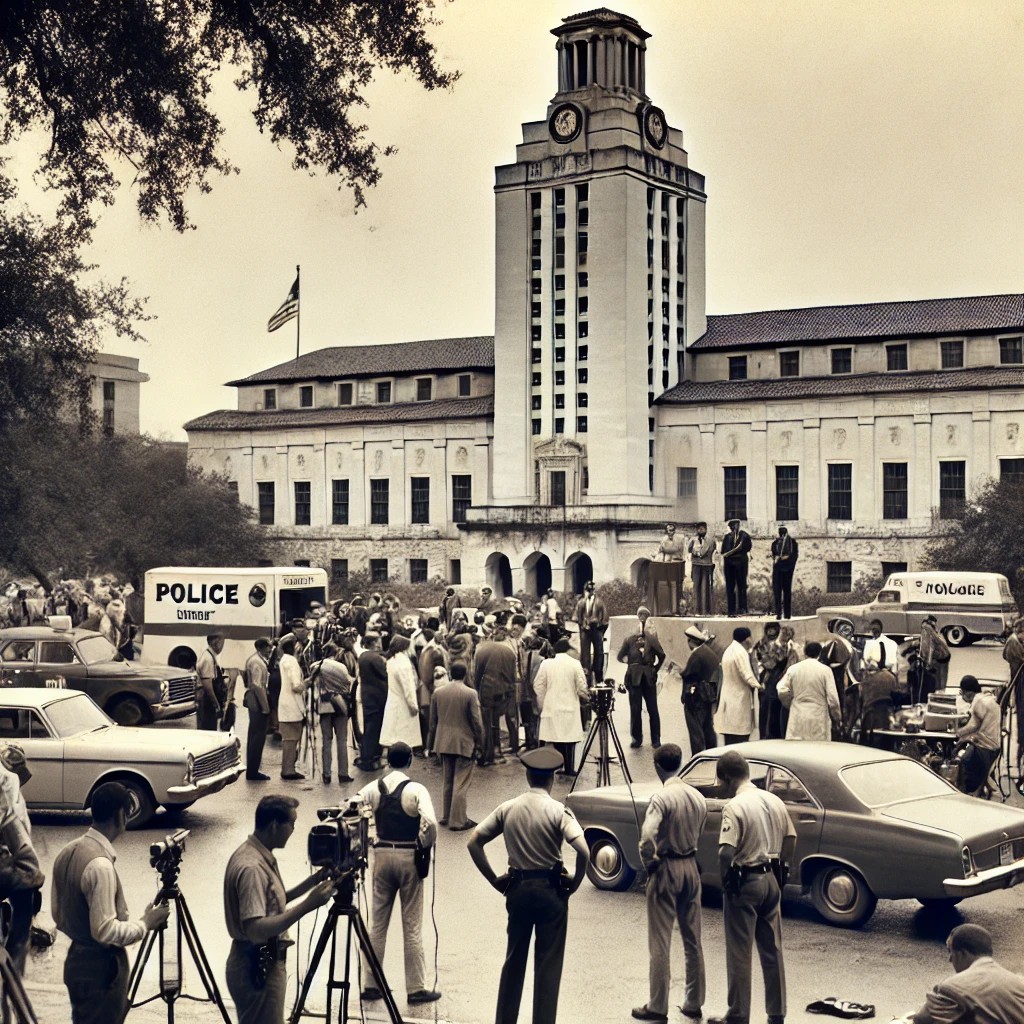
On August 1, 1966, a tragic mass shooting occurred at the University of Texas at Austin. Charles Whitman, a former Marine, climbed the university’s iconic tower and opened fire, killing 14 people and wounding 31 others. This horrific event, now known as the University of Texas Tower Shooting, is remembered as one of the first mass shootings in American history, profoundly impacting society and culture.
The Events of August 1, 1966
The University of Texas Tower Shooting began like any other summer day in Austin, Texas. However, Charles Whitman shattered the peace when he ascended the tower armed with multiple firearms. From his elevated position, Whitman fired at students, faculty, and pedestrians for 96 minutes. The attack ended when police officers, including Houston McCoy and Ramiro Martinez, bravely confronted Whitman on the observation deck and fatally shot him.
Immediate Impact and Response
The University of Texas Tower Shooting was unprecedented in scale and brutality. In the immediate aftermath, law enforcement, medical personnel, and media responded swiftly. The bravery of police officers who confronted Whitman set a precedent for future responses to similar incidents.
Ordinary citizens also displayed remarkable heroism during the University of Texas Tower Shooting. Many students and faculty members risked their lives to help the wounded, using makeshift stretchers to carry them to safety. This sense of community and solidarity became a powerful narrative in the shooting’s aftermath.

Societal and Cultural Impact
The University of Texas Tower Shooting had a profound impact on American society and culture. As one of the first mass shootings, it forced Americans to confront the horror of such violence. The event raised critical questions about gun control, mental health, and public safety.
Media coverage of the University of Texas Tower Shooting was extensive, bringing the reality of the violence into homes across America. This coverage set a precedent for how mass shootings would be reported in the future, sparking intense scrutiny and debate.
The shooting also affected the collective psyche of the American public. It shattered the illusion of safety in public spaces and made people more aware of their vulnerability to random acts of violence. This heightened awareness led to changes in security measures and emergency response protocols in schools and universities.
Historical Significance
The historical significance of the University of Texas Tower Shooting is profound. It stands as one of the earliest and deadliest mass shootings in the United States, predating other infamous incidents like the Columbine High School massacre and the Virginia Tech shooting. As such, it serves as a grim milestone in the history of American gun violence.
The shooting prompted changes in public safety and mental health policies. Increased scrutiny of gun control laws and a greater emphasis on identifying and addressing mental health issues followed the University of Texas Tower Shooting. Whitman’s case, in particular, underscored the importance of recognizing and treating mental health problems, as it was later revealed he had a brain tumor that may have influenced his actions.
In the years since the shooting, the University of Texas has taken steps to honor the victims. Memorials and commemorative events pay tribute to those who lost their lives and remind the community of the importance of vigilance and compassion.

Conclusion
The University of Texas Tower Shooting on August 1, 1966, remains one of the most tragic and impactful events in American history. The shooting forever changed the lives of those present and left a lasting mark on the nation’s consciousness. It highlighted the need for improved public safety measures and mental health care and served as a sobering reminder of the potential for violence in society. As we remember this tragic event, it is crucial to continue working toward a safer, more compassionate world.
